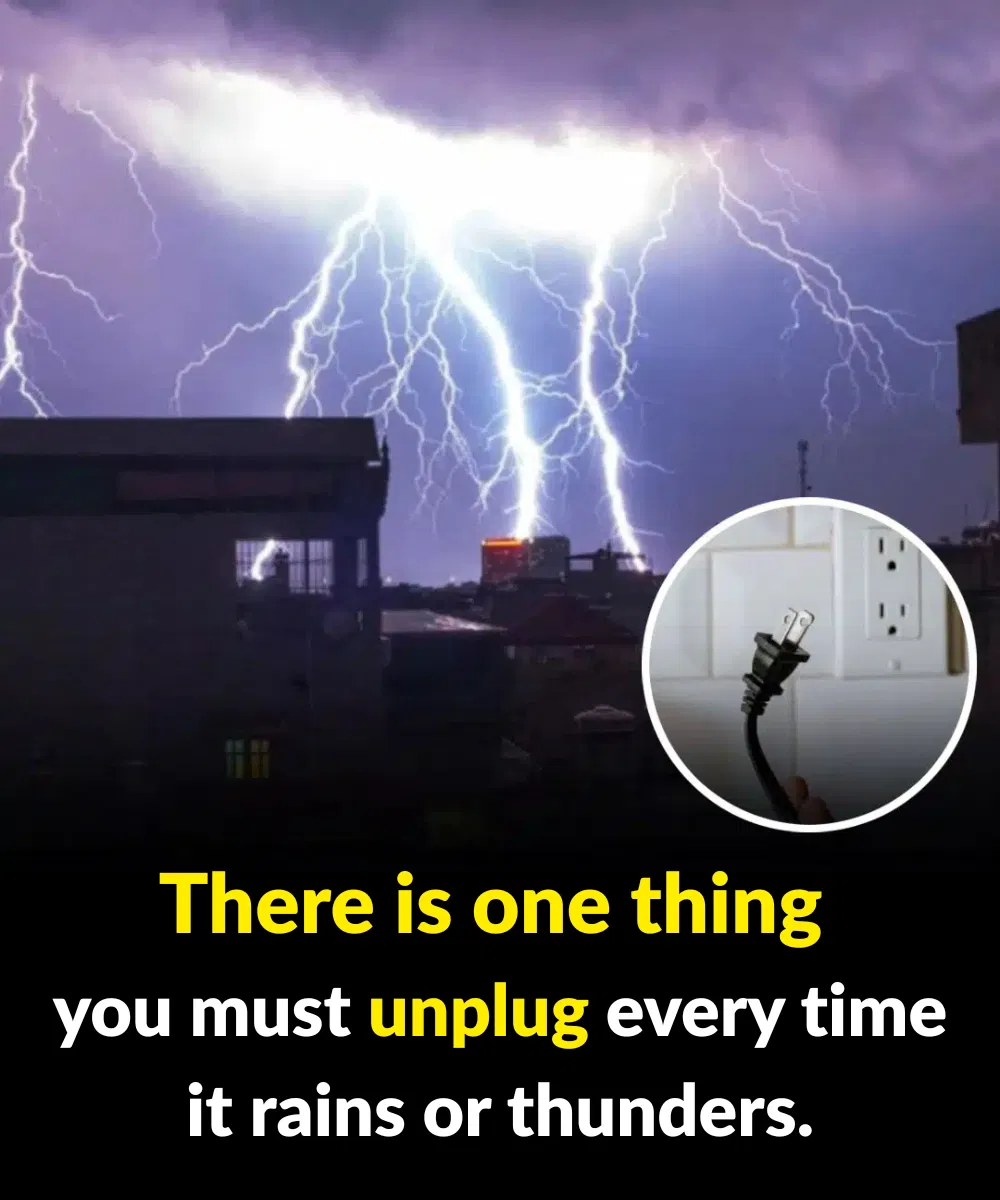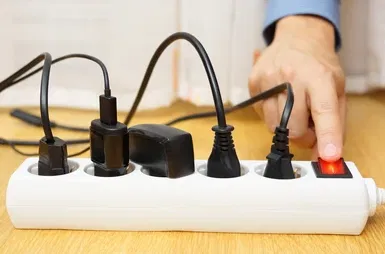There is one thing you must unplug every time it rains or thunders.

Who hasn’t bounced when they heard lightning streak across the sky, followed by a deafening roar? When lightning strikes near your home, it’s not just the weather that becomes electric, but also your equipment… and sometimes with terrible consequences. Let’s explore together the crucial steps you need to know.
Why unplugging your devices is crucial
Although most modern homes are attached with circuit breakers and sometimes flow protectors, these devices do not assure complete protection. In France, as elsewhere, lightning can directly strike a building, a nearby tree, or, more often, power or telephone lines from a distance. The electricity generated can then travel along the cables to your meter and connected appliances.

Every year, many families suffer accidents: broken televisions, damaged refrigerators, and fried computers, often because of power surges caused by thunderstorms.
Electrical appliances to unplug first during a storm

As soon as the first weather alerts or the slightest rumbling sound appear, take a few minutes to protect your home by unplugging the most exposed devices:
Televisions(most important), speakers, home cinema
Computers, tablets, phones charging
Oven, microwave, induction hob
Washing machine, dryer, dishwasher
Electric kettles, coffee makers, electric water heater
These devices are particularly susceptible to power surges. If you have outdoor installations powered by electricity (billboards, garden lighting, fountains), remember to also unplug their power.
If you have to leave your home before a storm, maintain a good habit: turn off and unplug everything that isn’t essential. This will save you a lot of problems when you return.
Some additional precautions to take
Even before the first lightning strikes the sky, build the habit of regularly examining the condition of your electrical system. Old wiring or faulty outlets significantly increase the risks during a storm.

If your home is in a flood zone, turn off the main power supply at the first sign of flooding, as water and electricity rarely blend well. After a flood, always have your installations inspected before restoring power.
Additional equipment for promoted security
Although turnning of appliances remains the most reliable measure, it’s a good way to install surge protectors and, if possible, a lightning rod. These devices offer additional protection, particularly useful in areas where thunderstorms happen frequently.
Lightning storms are powerful natural phenomena that can cause significant damage not only to the environment but also to our homes and electrical equipment. Understanding the risks and taking proper precautions is crucial to safeguard our devices and prevent costly accidents. While modern homes often come equipped with safety devices like circuit breakers and surge protectors, these alone may not guarantee full protection against the sudden and intense electrical surges caused by lightning strikes. Electricity can travel from a distant strike along power or telephone lines and damage appliances in your home in an instant.
The consequences of such power surges can be devastating. Televisions, computers, refrigerators, and other essential household devices can be permanently damaged, leaving families without critical amenities and facing expensive repairs or replacements. Such incidents happen regularly in many parts of the world, especially in regions prone to frequent thunderstorms. The financial burden aside, the inconvenience and disruption to daily life are significant.
This reality underscores the importance of proactively unplugging vulnerable electrical devices as soon as a storm approaches. Prioritizing the disconnection of sensitive appliances such as TVs, computers, tablets, and kitchen equipment can reduce the risk of damage dramatically. Outdoor electrical installations like garden lights or fountains should also be unplugged, as they too are exposed to surges. If you anticipate being away during a storm, taking the extra step of turning off and unplugging everything not essential can save you from unexpected heartbreak when you return.
Besides unplugging devices, it is vital to regularly inspect your home’s electrical wiring and outlets. Older wiring or faulty sockets increase the risk of electrical accidents during storms and should be repaired or replaced by professionals. Homes in flood-prone areas require even more caution; turning off the main power at the first sign of flooding is critical to prevent electrical hazards caused by water exposure. After any flooding event, a thorough professional inspection of your electrical installations is necessary before turning the power back on.
In addition to these practical steps, investing in surge protectors and lightning rods offers an extra layer of security. Surge protectors help absorb and neutralize unexpected spikes in electricity, while lightning rods safely divert the energy from direct strikes away from your home. Although these devices are not a substitute for unplugging appliances during storms, they provide valuable added protection, especially in areas with frequent lightning activity.
Ultimately, the key to protecting your home and electronics lies in preparation, awareness, and action. Understanding the nature of electrical surges caused by lightning and the vulnerabilities in your home’s electrical system empowers you to make informed decisions. By combining preventive measures such as unplugging devices, upgrading electrical systems, and installing protective equipment, you can minimize risks and enjoy peace of mind even during the most severe storms.
Remember, lightning is unpredictable and powerful, but your response doesn’t have to be reactive or last-minute. Taking the time to plan and act early is the best way to protect your valuable electronics and maintain your family’s safety. By treating electrical safety as an essential part of storm preparedness, you turn a potentially dangerous situation into a manageable one. Stay informed, stay prepared, and don’t underestimate the power of a simple unplugging habit—it can save your devices, your home, and ultimately your peace of mind.
